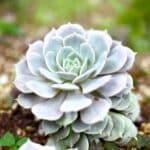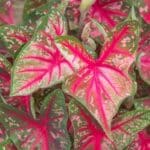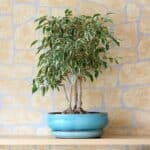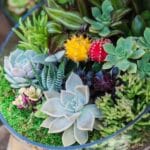Alocasias, sometimes known as Elephant Ears, are popular as both indoor and outdoor plants, especially in locations with year-round mild weather.
Elephant Ear is also a nickname for several other plant genera, including Alocasia, Colocasia, and Xanthosoma.
While some of these plants are too huge to be kept indoors, many others are small enough to be used for indoor gardening (between 1 and 3 feet). These cultivars, which have beautiful leaves in a variety of hues and textures, are reasonably straightforward to care for, provided you understand their needs.
This article compared alocasia sinuata vs baginda, highlighting their key differences and similarities. Both are perennial plants and belong to the same family.
Alocasia sinuata and baginda differ in terms of coloring, texture, and foliage formation. Alocasia sinuata is native to the Philippines, while alocasia baginda originated from Indonesia. Sinuata is much smaller than baginda when fully matured, making it a better choice for indoor cultivation.
Table of Contents
What is Alocasia Sinuata?
Alocasia sinuata, often known as the Mirror Face or Jewel Alocasia, is a small-growing Philippine native plant with bullate, densely coriaceous, glossy leaves that is a favorite topic in gardening.
It’s a rare plant that, when properly cared for, may contribute to your indoor environment – and it’s one of the most endangered species on the planet.
The plants start green, then mature into a richer green with a metallic gray patina and dark green sunken veins, creating a stunning foliage show.
The foliage of Alocasia sinuata is rich, with broad, lustrous, dark green leaves. When grown under ideal conditions, the plant grows quickly. It was given its name because of its sinuate (wavy) leaf edges, but this trait is rarely seen.
Alocasia sinuata, unlike other Alocasia species (also known as Elephant ears), is small, making it perfect for indoor cultivation.
Alocasia Sinuata Identification
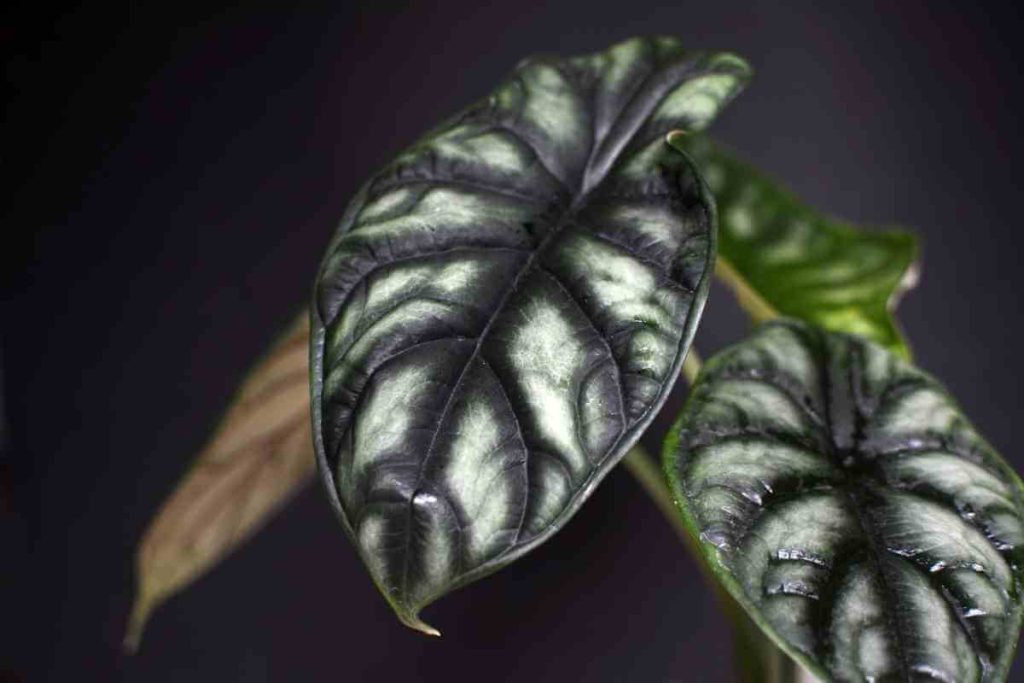
Their arrowhead-shaped leaves, which sit on tall petioles, help to identify them. The leaves and stems of some types, such as the zebrina and silver dragon, feature burgundy highlights.
Alocasia leaves have strong veins in a variety of colors, including green, black-green, white, and even pink.
What is Alocasia Baginda?
Alocasia Baginda, commonly known as Dragon Scale, is a stunning plant that is a must-have for every plant enthusiast!
With their ribbed structure, the leaves of Alocasia Baginda resemble huge scales, and the contrast between the silvery green backdrop and the deep dark green markings at the front is charming.
This plant lives up to its name and reputation!
Alocasia Dragon Scale is a terrarium-friendly plant that stays compact. Baginda species have many different variants, many of which are very lovely.
Allow to thoroughly dry between waterings, use a fast-draining potting mix, and provide bright light and sufficient ventilation, as with other thick-leaved Alocasia.
Alocasia is sensitive to a range of dangerous fungal infections due to overwatering, damp leaves, and soggy soil. When Dragon Scale is dormant in the winter, it requires less water than when it is actively growing in the summer.
Alocasia Baginda is hard to come by and, when you do, they usually come at a high price. The leaves of Alocasia Baginda are silvery gray with dark, pronounced veins.
Alocasia Baginda Identification
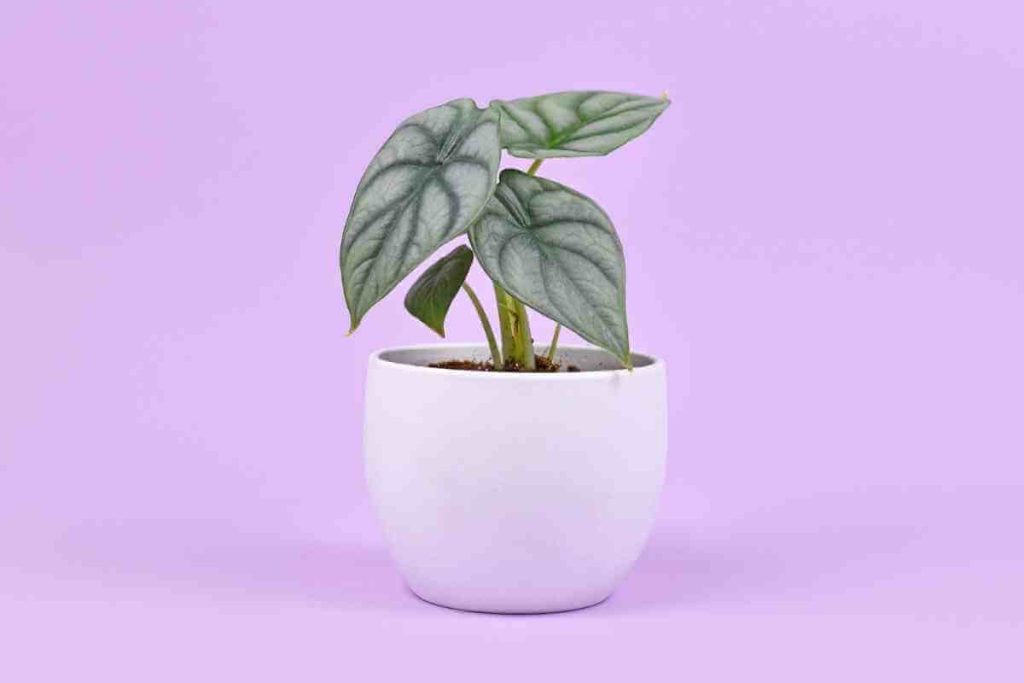
The leaves of the Dragon Scale are silver-green in color and darken as they get closer to the center. The lower side is pale green with noticeable maroon venation that starts out faint on fresh leaves but deepens fast as the leaf hardens.
Despite the fact that Alocasia Baginda blooms, its flowers are dwarfed by its magnificent foliage.
Alocasia Sinuata Vs Baginda | Compared
| Alocasia Sinuata | Alocasia Baginda | |
| Common name | Quilted Dream | Dragon Scale, silver dragon. |
| Botanical name | Alocasia Sinuata | Alocasia Baginda |
| Plant type | Perennial plant | Perennial plant |
| Family | Araceae | Araceae |
| Plant Origin | The limestone forests of Samar, Leyte, and parts of Mindanao in the Philippines. | Eastern Borneo, Indonesia. |
| Mature size | 12 to 14 inches (30-35cm) | 3 feet tall (1 m) and spread about 1,6 feet (50 cm) wide. |
| Soil type | Well draining potting mix | A chunky, well-draining potting mix is essential. |
| Sun exposure | Bright, indirect light | Works well in partially shaded areas. |
| Toxicity | Toxic to humans and animals. | Toxic to humans and animals. |
| Cold Hardiness | Not cold hardy. | Not cold hardy. |
Differences Between Alocasia Sinuata and Alocasia Baginda
Below are the major differences between alocasia sinuata vs baginda:
Humidity Levels
To survive, Alocasia Sinuata necessitates a high humidity environment (75 percent or above). Lower humidity levels might cause leaf edges to crisp or yellow unevenly.
In contrast, the ideal humidity level for the Alocasia Baginda plant is between 60 and 80 percent. While many Alocasia plants appreciate this level, it can be highly uncomfortable for the residents of a typical household.
Appearance
The silvery-green leaves of the Alocasia Dragon Scale is darker towards the center, giving the lighter shade a fantastic tone. The veins on the undersides are a bright red color. With age, the coloring of immature leaves deepens.
The red-like leaves with dark, nearly black markings on Alocasia Sinuata, on the other hand, appear fantastic and dramatic. The Alocasia Sinuata is increasingly being utilized to beautify homes with its metallic shine and scarlet glow on the undersides of its leaves.
How To Water Your Alocasia Plants
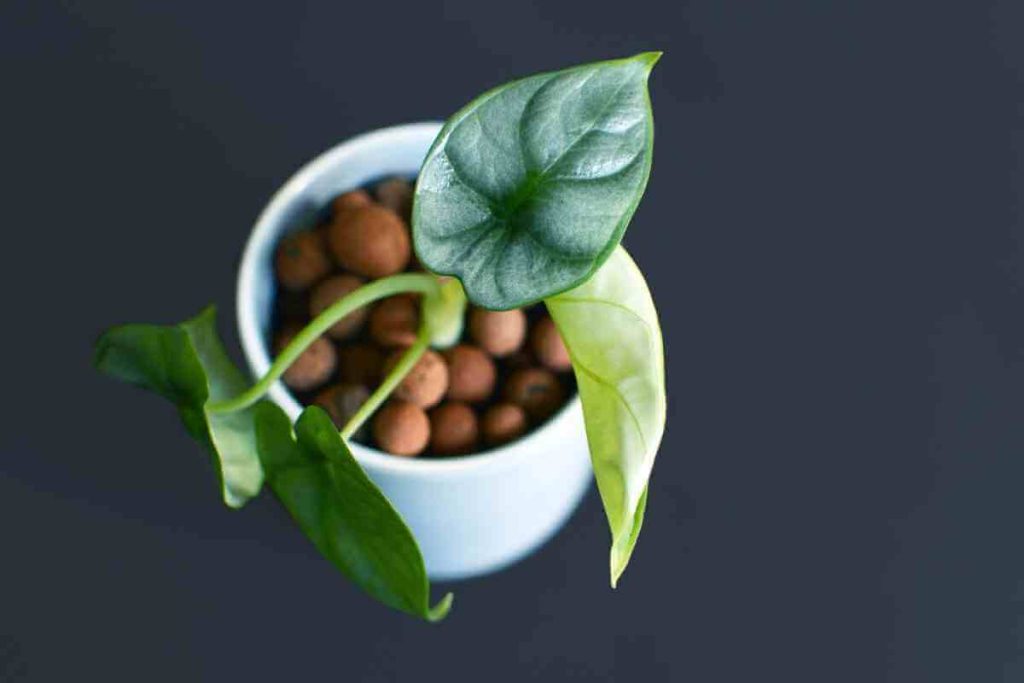
Alocasias prefer to keep their leaves evenly moist and drop them if they can dry out too much.
Use a moisture meter to make sure they’re ready to be watered. Water fully when the meter shows a 3 (the line between moist and dry). This is how you can keep all of your plants happy by keeping them properly hydrated.
You can also stick your finger at least an inch into the soil and water it when it feels dry (i.e., the soil does not stick to your finger and does not feel moist). This can be done as well, but your finger may have difficulty distinguishing between cool and damp soil.
How To Revive A Dying Alocasia Sinuata
In the form of tubers, Alocasias have large energy storage. This aids Alocasias in reviving even after being exposed to harsh environments.
In a bright shade during the summer or spring, keep a dying Alocasia sinuata outside. The plant will recover thanks to the season and ideal conditions.
Frequently Asked Questions
How big does Alocasia Baginda get?
This popular indoor decorative houseplant can reach a height of 39 to 79 inches (1 to 2 meters). It thrives in indirect sunshine and is well-watered. Just make sure you don’t overdo it with the water.
What is Alocasia Sinuata used for?
Animal feed and famine food are both made from the rhizomes of alocasia sinuata. To get rid of the stinging calcium oxalate crystals, they need to be cooked or roasted for a lengthy time.
Is Alocasia Sinuata rare?
Yes, alocasia sinuata is a rare plant. Its bright, silver-green leaves and dark green veins will dazzle onlookers with a texture reminiscent of dragon scales.
What kind of soil does Alocasia require?
The soil is the foundation for proper Alocasia plant maintenance. It should be permeable, with one part soil, one part perlite or coarse potting sand, and one part peat as a recommended mix. The potting soil must be adequately aerated, well-drained, and moist at the same time.
Can you water Alocasia with tap water?
No, it’s not good to water alocasia with tap water as salts, minerals, and chlorine in tap water can make alocasias sensitive, causing spots. Allow the water to soak in a bucket or watering can for 24 hours before applying it to the plant.
Some of the undesired materials will be able to evaporate due to this. Alternatively, distilled water can be used.
Conclusion
At this time, the only thing that distinguishes Alocasia Sinuata and Alocasia Baginda is the tiny variance in coloring, texture, and foliage formation – the variety is intriguing in determining whether these are different species native to the natural setting or hybrids created by nursery owners.
Another easy way to tell the difference between Alocasia baginda and Alocasia sinuata is that Alocasia sinuata’s sinus is usually closed. In contrast, Alocasia baginda’s is more open (sometimes fully open, which you don’t see on Alocasia sinuata).
Alocasia sinuata leaves are also much more bullate (swollen with deep grooves). Sinuata is also incredibly shiny, which is how it got its original moniker “mirror face.”
Related Articles:

